
Concept explainers
(a)
Interpretation:
Condensed structural formula for the given name that has molecular formula of
Concept Introduction:
A common nomenclature of naming acetal and hemiacetal is done by finding the product of hydrolysis of the hemiacetal or acetal. The name of the carbonyl compound is added at the end to describe the name of such compound.
The general structure of hemiacetal is,

The general structure of acetal is,

(b)
Interpretation:
Condensed structural formula for the given name that has molecular formula of
Concept Introduction:
A common nomenclature of naming acetal and hemiacetal is done by finding the product of hydrolysis of the hemiacetal or acetal. The name of the carbonyl compound is added at the end to describe the name of such compound.
The general structure of hemiacetal is,
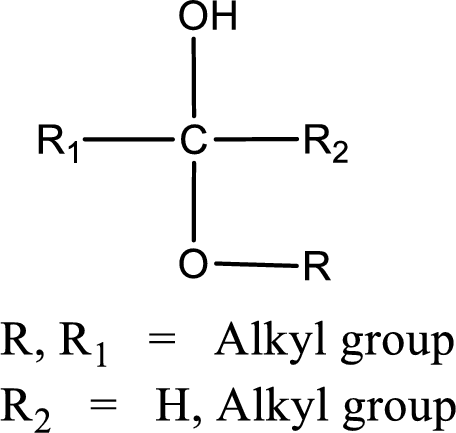
The general structure of acetal is,
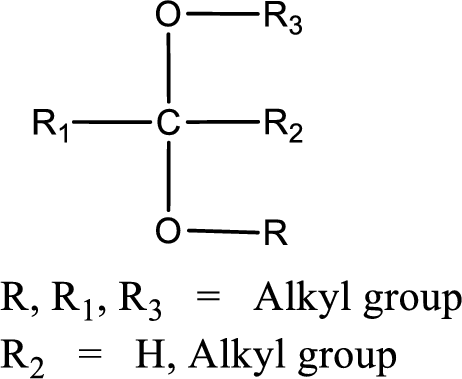
(c)
Interpretation:
Condensed structural formula for the given name that has molecular formula of
Concept Introduction:
A common nomenclature of naming acetal and hemiacetal is done by finding the product of hydrolysis of the hemiacetal or acetal. The name of the carbonyl compound is added at the end to describe the name of such compound.
The general structure of hemiacetal is,
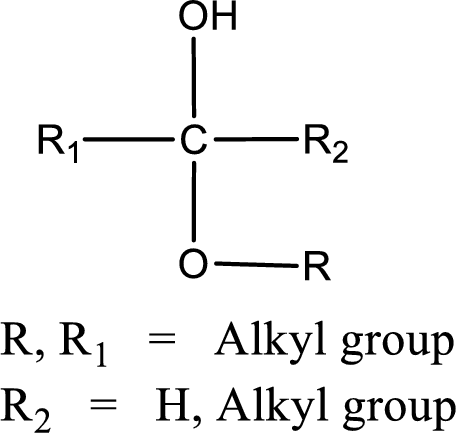
The general structure of acetal is,
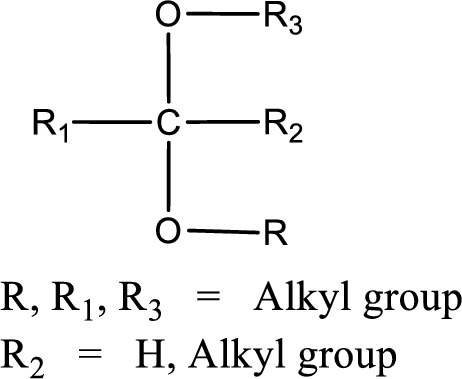
(d)
Interpretation:
Condensed structural formula for the given name that has molecular formula of
Concept Introduction:
A common nomenclature of naming acetal and hemiacetal is done by finding the product of hydrolysis of the hemiacetal or acetal. The name of the carbonyl compound is added at the end to describe the name of such compound.
The general structure of hemiacetal is,
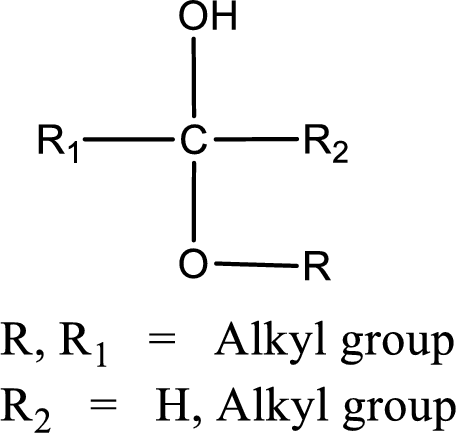
The general structure of acetal is,
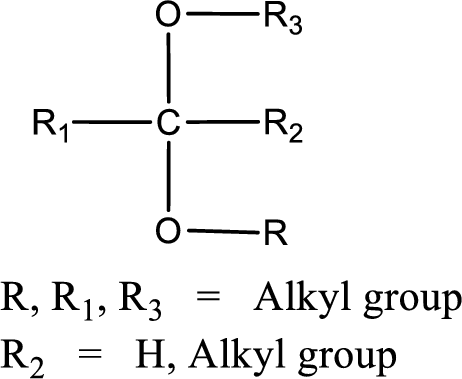
Trending nowThis is a popular solution!

Chapter 15 Solutions
General, Organic, and Biological Chemistry
- List the following compounds in order of increasing water solubility: a.ethoxyethane b.propanoic acid c.pentane d.1 butanolarrow_forwardGive the structure of an alcohol that could be used to prepare each of the following compounds: a. b. c.arrow_forwardHow can phenol be distinguished from cyclohexanol? O A. solubility in water B. solubility in hydrochloric acid solution C. solubility in sodium bicarbonate solution D. solubility in sodium hydroxide solutionarrow_forward
- What are the major products of the reaction of ethyl benzoate with hydrochloric acid and water? a. benzoic acid and ethanol b. phenylic acid and ethanol c. ethanoic acid and benzene d. acetic acid and toluene e. phenylic acid and methanolarrow_forwardDraw a structural formula of the principal product formed when ethyl benzoate is treated with reagent. Q.) H2O, H2SO4, heatarrow_forwardMestranol, sold under the brand names Enovid, Norinyl, and Ortho-Novum among others, is an estrogen medication which has been used in birth control pills. Select all of the functional group families, to which mestranol belongs. Choose one or more: A. Ester B. Alkene C. Ether D. Thiol E. Alcohol F. Arene G.Aldehyde H.Ketone I. Alkynearrow_forward
- 4. Draw the line structure for the ester that can be formed from the reaction of the acid anhydride and the alcohol given below. :0: :0: HO CH3-CH2-C-o-C-CCH2-CH3 acid anhydride alcoholarrow_forwardA lot of controversy surrounds the use of Aspartame as an artificial sweetener. The main argument is concerned with the production of methanol in the body. From the structure of aspartame given below: G0₂CH3 HẠN CH—ỆNH—CHCH, CH, COCH Source for the formation of methanol is, A. ester group in the compound B. amide group in the compound C. carboxylic acid group in the compound D. amino group in the compound E. benzene ring in the compoundarrow_forwardWhich of the following is not a physical property of alcohols or phenols? A. The solubilities of primary alcohols in water decrease with increasing molecular weight. B. Due to hydrogen bonding, boiling points of alcohols is much higher than those of corresponding alkanes. C. The hydroxyl group of an alcohol is nonpolar. D. Phenols are generally only slightly soluble in water.arrow_forward
- Which of the following statements about thiols and thioethers is true? a. Both are odorous and highly volatile Sulfur-containing inorganic compounds. b. Organosulfur compounds that are isomeric with each other. c. They are the alkyl derivatives of hydrogen disulfide Explain it? Give me clear handwriting and clear imagearrow_forward1. WRITE THE IUPAC NAME OF THIS ETHER CH3CH2-O-CH2CH2CH2CH2CH3 2. HOW DO PHENOLS DIFFER FROM ALCOHOLS IN TERMS OF STRUCTURE AND PROPERTIES? 3. HOW DO PHENOLS DEIFFER IN PROPERTIES FROM AROMATIC HYDROCARBONS?arrow_forwardWhat functional group would be present in the product (the main organic product) of a reaction between an alcohol and a carboxylic acid with an acid catalyst?arrow_forward
 Chemistry for Today: General, Organic, and Bioche...ChemistryISBN:9781305960060Author:Spencer L. Seager, Michael R. Slabaugh, Maren S. HansenPublisher:Cengage Learning
Chemistry for Today: General, Organic, and Bioche...ChemistryISBN:9781305960060Author:Spencer L. Seager, Michael R. Slabaugh, Maren S. HansenPublisher:Cengage Learning Introductory Chemistry: An Active Learning Approa...ChemistryISBN:9781305079250Author:Mark S. Cracolice, Ed PetersPublisher:Cengage Learning
Introductory Chemistry: An Active Learning Approa...ChemistryISBN:9781305079250Author:Mark S. Cracolice, Ed PetersPublisher:Cengage Learning Chemistry: The Molecular ScienceChemistryISBN:9781285199047Author:John W. Moore, Conrad L. StanitskiPublisher:Cengage Learning
Chemistry: The Molecular ScienceChemistryISBN:9781285199047Author:John W. Moore, Conrad L. StanitskiPublisher:Cengage Learning General, Organic, and Biological ChemistryChemistryISBN:9781285853918Author:H. Stephen StokerPublisher:Cengage Learning
General, Organic, and Biological ChemistryChemistryISBN:9781285853918Author:H. Stephen StokerPublisher:Cengage Learning Organic And Biological ChemistryChemistryISBN:9781305081079Author:STOKER, H. Stephen (howard Stephen)Publisher:Cengage Learning,
Organic And Biological ChemistryChemistryISBN:9781305081079Author:STOKER, H. Stephen (howard Stephen)Publisher:Cengage Learning,




